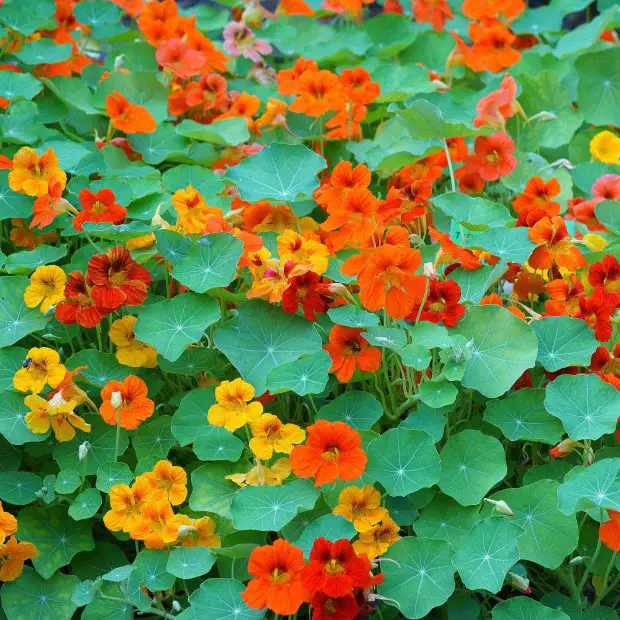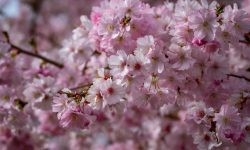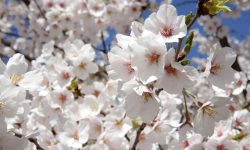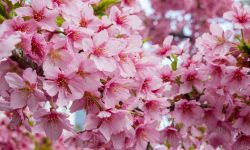Nasturtiums are one of the most charming and versatile flowers you can grow in your garden. With their cheerful blooms in shades of orange, red, and yellow, along with lush round leaves, these plants bring both beauty and practicality. Many gardeners love nasturtiums not just for their aesthetics but also for their ability to thrive in less-than-perfect soils, making them ideal for beginners and low-maintenance gardens.
Beyond their looks, nasturtiums are also edible. Their peppery leaves and brightly colored petals add both flavor and flair to salads, while their seed pods can be pickled like capers. Growing nasturtiums from seed is one of the most satisfying and straightforward gardening tasks you can take on, and when done correctly, it rewards you with abundant blooms that last through the season.
Why Choose to Grow Nasturtiums from Seed

Growing nasturtiums from seed offers several compelling advantages for both novice and experienced gardeners. First and foremost, starting from seed is incredibly economical. A single packet can yield dozens of vibrant plants, making it a cost-effective way to fill your garden beds, borders, or containers with color. You also gain access to a wider variety of nasturtium cultivars, including unique heirloom types and rare color combinations that are often unavailable as starter plants in nurseries.
Seeds allow you to control every step of the growing process—from soil preparation to germination—helping ensure healthy and well-adapted plants. This method also gives you flexibility in timing and placement, so you can start seeds indoors before the last frost or sow them directly into warm garden soil as spring settles in.
Another reason to choose seeds is that nasturtiums are fast-growing and highly rewarding. Their quick germination and vigorous growth mean you see results in just a few weeks, making them an ideal choice for gardeners looking for instant impact. Additionally, nasturtiums grown from seed tend to develop stronger root systems, adapt better to their environment, and bloom more abundantly throughout the season.
For anyone interested in companion planting or edible gardening, growing from seed also ensures that the plants are chemical-free from day one, making their leaves and flowers safer for culinary use. Whether you’re aiming for beauty, biodiversity, or a burst of color in your landscape, starting nasturtiums from seed is a smart and satisfying choice.
Understanding the Nasturtium Growing Cycle
To successfully grow nasturtiums from seed, it’s essential to understand their natural growing cycle, from germination to flowering and seed production. This knowledge helps you time your planting, manage care, and ensure the plants reach their full potential in your garden.
The cycle begins with seed germination, which typically occurs within 7 to 14 days after planting in warm, moist soil. Nasturtium seeds have a tough outer shell, but once softened by water, they sprout quickly in favorable conditions. Germination marks the start of rapid vegetative growth, with round, shield-shaped leaves emerging and spreading across the soil surface or climbing upward, depending on the variety.
Within 4 to 6 weeks of germination, nasturtiums enter their flowering stage. Bright, trumpet-shaped blooms in shades of orange, red, yellow, and cream begin to appear and continue in flushes throughout the growing season. Nasturtiums are known for their heat tolerance and thrive in full sun, often blooming well into late summer or even early fall.
As flowers fade, they give way to seed pods—plump, green structures that eventually dry and drop seeds back to the soil. If left undisturbed, nasturtiums can self-seed, restarting the cycle naturally the following year. Gardeners can also collect mature seeds for replanting or storage.
Understanding this growth pattern allows you to anticipate when to fertilize, water, and prune for optimal performance. It also helps in planning successive plantings or collecting seeds for propagation. With each stage clearly defined and relatively fast-paced, the nasturtium life cycle offers both beauty and productivity in a single season.
When Is the Best Time to Plant Nasturtium Seeds
The best time to plant nasturtium seeds depends on your local climate and whether you’re starting them indoors or directly in the garden. In most temperate regions, sow seeds outdoors after the last frost date, when the soil has warmed to at least 55°F to 65°F. Planting too early in cold, wet soil can delay germination or lead to seed rot.
If you prefer an early start, you can sow seeds indoors 2 to 4 weeks before the final expected frost. Use biodegradable pots to avoid root disturbance during transplanting. This method ensures blooms arrive earlier in the season, especially in shorter growing climates.
In warm climates with mild winters, nasturtium seeds can even be planted in the fall for winter or early spring flowering. Always align planting times with warm, frost-free periods to give seeds the best conditions to sprout and thrive.
Choosing the Best Spot for Planting Nasturtium Seeds
Nasturtiums thrive in sunny locations with well-draining soil. Choose a spot that receives at least 6 hours of direct sunlight daily to encourage vibrant blooms and healthy foliage. While they can tolerate partial shade, especially in hot climates, too much shade will reduce flowering and cause leggy growth.
Avoid overly rich soil, as high nutrient levels—particularly nitrogen—can lead to lush leaves but fewer flowers. Nasturtiums prefer slightly poor, loose soil where their roots won’t stay soggy. Raised beds, borders, containers, or edges of walkways make excellent planting spots, especially for trailing or cascading varieties.
Ensure the location is protected from strong winds, especially if you’re growing climbing nasturtiums on a trellis. With the right balance of sun, drainage, and space, your nasturtium seeds will establish quickly and reward you with long-lasting color throughout the season.
Preparing the Soil for Sowing Nasturtium Seeds
Proper soil preparation is key to helping nasturtium seeds germinate quickly and grow vigorously. Start by choosing a location with loose, well-drained soil that isn’t overly fertile. Nasturtiums naturally thrive in poorer soils, so you don’t need to amend with compost or rich organic matter—doing so can lead to excessive foliage growth at the expense of flowers.
Before sowing, loosen the top 6 to 8 inches of soil using a garden fork or hoe. Break up any clumps and remove rocks, weeds, or debris that could hinder seed-to-soil contact. Nasturtium seeds are large and need direct contact with the soil to sprout effectively.
If your soil is heavy or clay-based, mix in a small amount of sand or perlite to improve drainage. Check that the pH falls between 6.0 and 7.5, which is ideal for nasturtiums. Avoid using commercial fertilizers before planting, as these can encourage leafy growth and reduce flower production.
Finally, rake the soil surface smooth and slightly moisten it before sowing your seeds. With clean, loose, and moderately dry soil, your nasturtiums will have the perfect environment to begin their journey from seed to full bloom.
How to Sow Nasturtium Seeds Correctly
Sowing nasturtium seeds the right way ensures strong germination and healthy seedling development. Begin by planting the seeds directly into the prepared soil once the temperature is consistently above 55°F. Each seed should be sown about ½ inch to 1 inch deep—deep enough to maintain soil contact but not so deep that it delays sprouting.
Space the seeds 8 to 12 inches apart to allow the plants room to spread without competing for sunlight, moisture, or nutrients. For climbing or trailing varieties, position seeds near a fence, wall, or trellis so the vines have something to cling to as they grow. In containers or window boxes, ensure adequate spacing to prevent overcrowding and encourage airflow.
After sowing, gently cover the seeds with soil and press the surface lightly to ensure firm contact. Water the area thoroughly but gently, avoiding runoff that could displace the seeds. Keep the soil consistently moist—not soggy—during the 7 to 14 days it typically takes for seeds to germinate.
In cooler climates, consider soaking seeds in warm water for 6 to 12 hours before planting. This helps soften their hard outer coating and speeds up germination. Whether sowing indoors or outdoors, attention to depth, spacing, and moisture will set your nasturtiums up for vibrant success.
Caring for Nasturtium Seedlings as They Grow
Once nasturtium seedlings emerge, providing the right care during this early growth stage is essential for developing healthy, flowering plants. Begin by ensuring they continue to receive plenty of sunlight—at least 6 hours daily. Sunlight not only fuels growth but also keeps seedlings from becoming leggy and weak.
Water seedlings regularly, keeping the soil consistently moist but never waterlogged. Overwatering can lead to root rot, while dry soil may cause young plants to wilt or stop growing. Water at the base to avoid wetting the leaves, which can reduce the risk of fungal diseases.
If you started seeds indoors or in containers, thin them once they develop two to three sets of true leaves. This gives each seedling enough space and airflow, which prevents competition and encourages stronger root systems. You can either snip the weaker seedlings at soil level or gently transplant them elsewhere.
Nasturtiums rarely require fertilizing. In fact, too much nutrition—especially nitrogen—can lead to leafy growth at the expense of flowers. If growth seems slow or pale, a light application of balanced organic fertilizer may help, but use sparingly.
As the seedlings grow, gently train climbing or trailing varieties to follow their support structure. Monitor for signs of pests like aphids or caterpillars, and remove them by hand or with a mild insecticidal soap. With consistent light, water, and minimal interference, your nasturtium seedlings will flourish and reward you with colorful blooms throughout the growing season.
Growing Nasturtiums in Containers and Hanging Baskets
Nasturtiums are exceptionally well-suited for growing in containers and hanging baskets, offering an easy way to add vibrant color to patios, balconies, window boxes, and small garden spaces. Their trailing and bushy growth habits make them perfect for both decorative and practical purposes—especially where space is limited.
Begin by selecting a container that’s at least 8 to 12 inches deep with good drainage holes. Nasturtiums dislike soggy soil, so well-draining containers are essential. Use a light, loose potting mix that allows excess water to escape easily. Avoid overly rich or fertilized soil, as this encourages lush foliage at the expense of flowers.
Sow seeds directly into the container, spacing them 8 to 10 inches apart for healthy growth. For a fuller look, you can place a few extra seeds, then thin the seedlings later if needed. Choose a sunny location where the plants will receive at least 6 hours of direct sunlight daily to promote abundant blooms.
Trailing varieties such as Tropaeolum majus are ideal for hanging baskets, where their vines will spill beautifully over the edges. Bush types are better suited for upright containers, creating a neat, compact floral display. In both cases, regular watering is crucial, as containers tend to dry out faster than garden soil. Water when the top inch of soil feels dry, and avoid letting the soil become either soggy or bone-dry.
With minimal care and attention, nasturtiums in containers or hanging baskets will flourish from spring through fall, providing long-lasting color and cheerful charm in any garden setting.
Common Problems and How to Avoid Them
While nasturtiums are generally low-maintenance, they can face a few common issues. One of the most frequent problems is aphid infestations, which cluster on young stems and buds. You can prevent this by regularly inspecting your plants and using a strong spray of water or neem oil at the first sign of pests.
Powdery mildew may develop in humid or overcrowded conditions. To avoid it, ensure good air circulation and water the base of the plant rather than the foliage. Overwatering or using rich soil can lead to leggy growth with few flowers. Always grow nasturtiums in well-draining soil and avoid fertilization.
By keeping an eye on moisture levels, spacing plants properly, and watching for early signs of pests or disease, you’ll enjoy healthier nasturtiums and a garden full of bright, beautiful blooms.
Harvesting and Saving Nasturtium Seeds for Future Planting
Saving nasturtium seeds is a simple and rewarding way to continue growing these colorful flowers year after year. As the blooming season winds down, nasturtiums produce large, rounded seeds where the flowers once were. These seeds often fall to the ground, but with careful timing, you can harvest them before they drop or rot.
Wait until the seeds turn from green to light brown and feel firm to the touch. Gently twist them off the stem or collect them from the soil surface if they’ve recently fallen. Spread the seeds out on a paper towel or tray in a dry, well-ventilated spot away from direct sunlight. Allow them to dry completely for about one to two weeks.
Once dried, store the seeds in a labeled paper envelope or glass jar with a desiccant packet. Keep them in a cool, dark place until the next planting season. Properly stored nasturtium seeds remain viable for up to 3 years, giving you a steady supply of free, garden-ready seeds.
Frequently Asked Questions ABout Planting Nasturtium Seeds
What type of nasturtium should I grow—trailing or bush?
It depends on your garden space and design. Trailing nasturtiums are ideal for hanging baskets, containers, or as ground cover because of their vining habit. Bush (or dwarf) varieties stay compact and are better suited for borders, raised beds, or small container gardens. Both types offer vibrant blooms and are easy to grow from seed.
Do nasturtium seeds need to be soaked before planting?
Soaking nasturtium seeds overnight in warm water can help speed up germination by softening their hard outer coating. While not strictly necessary, this simple step is especially useful if you’re planting directly in cooler spring soils, where germination can be slower. After soaking, plant seeds immediately in moist soil.
How long does it take nasturtium seeds to germinate?
Nasturtium seeds typically germinate within 7 to 14 days, depending on soil temperature and moisture. Warmer conditions (around 65–70°F or 18–21°C) and evenly moist, well-draining soil will encourage faster sprouting. If seeds take longer to sprout, check that they’re not too deep or in soil that’s too cold or wet.
Can nasturtiums grow in partial shade?
Nasturtiums prefer full sun for the best flowering, but they can tolerate light shade. In partial shade, they may produce more foliage than flowers. If you’re growing them in a spot that gets morning or filtered sunlight, choose bush varieties and avoid heavy fertilization to encourage blooms over leaves.
Are nasturtiums edible, and how can I use them?
Yes, both nasturtium flowers and leaves are edible and have a peppery, slightly spicy flavor. They make a colorful, tasty addition to salads, open sandwiches, and savory dishes. The seeds can even be pickled as a substitute for capers. Always make sure you’re harvesting from plants grown without pesticides or harmful chemicals.
Conclusion
Planting nasturtium seeds is one of the simplest ways to bring vibrant color, charm, and even flavor to your garden. Whether you’re tucking them into pots, trailing them over baskets, or letting them sprawl through flower beds, these cheerful blooms reward minimal effort with maximum beauty. Start with a few seeds—and you might just find yourself growing nasturtiums every season.






